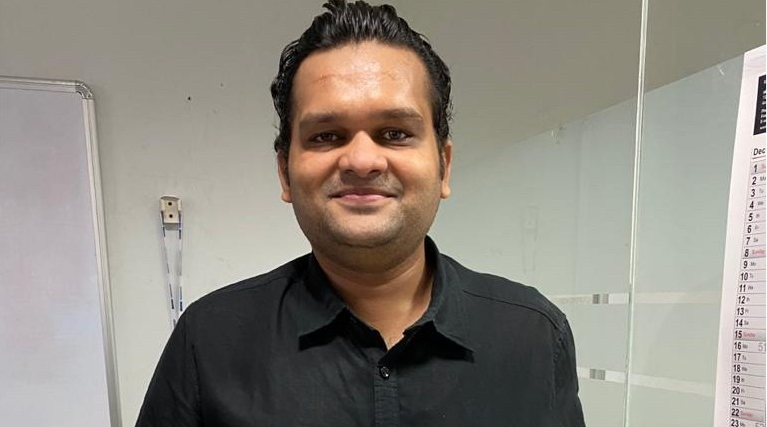Multi-tier visibility, digitalization way forward for auto industry in semiconductor crisis
Industry leaders from the automotive sector bat for multi-tier visibility, localization, digitalization, and upskilling of teams as some of the key important components of building resiliency against the current global semiconductor shortage in the long term.
December 10, 2021: Industry leaders from different tiers of the automotive sector on Thursday batted for there to be companies to focus on multi-tier visibility, localization, digitalization, and upskilling of their teams as the way forward to building some resiliency against the shocks of the current global semiconductor shortage which are slated to remain till 2024.
They were speaking on the panel discussing "Long term strategies and partnership to make the automotive semiconductor supply chain stable and secure' as part of the fifth edition of ITLN's Auto SCM Virtual Summit presented by Frankfurt Airport and World Trade Center Pune- India.
Senior leaders of the industry collectively touched upon several pain points faced by the industry collectively like huge air freight rates or spot rates, supply chain disruption in the past 18 months due to power outages in China, key port shutdowns in China, container congestions in the US, ice storms in texas, etc and the decrease in demand during the start of the pandemic and the renewal of demand and higher digitalization seen in the automotive sector post the pandemic as reasons that led to the global semiconductor shortage.
"If we talk about logistics community then they need to reduce the lead times, ensure that we receive the components on time and there have to be various ways to bring the components as that is a challenge we are currently facing, They can have long-term contracts and volume booking of the components that we are bringing so that when we have the material ready that can be brought on time," said Ankit Chandak, Head, Supply Chain Management at ElringKlinger Automotive Components.

Ankit Chandak, head, supply chain management at ElringKlinger Automotive Components
Speaking on short and long term strategies that automotive companies can look into to mitigate the global chip shortage, Sanjay Suranglikar, senior general manager, central purchase, TATA AutoComp Systems said, "In terms of short term strategies we will have to step into the suppliers' shoes and look at how we are adding value to that supplier. Ultimately when there is a commodity that is in shortage, it becomes important to see how our relationship building with that supplier has been and how we are taking it from a vendor to a 'partner approach'. We have done it in some cases for critical commodities where there is a complete partnership approach. Another critical thing is to have everybody on the same platform to avoid the bullwhip effect. This will ensure that the supply chain will become responsive and that instead of the automobile talking to vendor and vendor talking to the sub-vendor- all are on the same platform and there is complete visibility. We have also done some things by way of which there is complete stock visibility for vendors on a daily basis."
Suranglikar added, "On the long term front, basically long-term contracts with committed offtake from the suppliers. That sometimes is missing in terms of not having the surety of getting lifted. So such contracts can make a lot of difference in addressing that situation and definitely just-in-time will not work in critical commodities anymore."

Sanjay Suranglikar, senior general manager, central purchase, TATA AutoComp Systems
Batting for upskilling and digitalization in the sector, Dr. Balakrishnan A.S, VP of Material Planning & Logistics at Ford Motor Private Limited said, "Upskilling is a key area and the multi-tier visibility using digital twins, etc, I think that's the way to go. Localization is the key and I feel that partial localization possibility is there and that's the way some other sectors like power, electronics, and those diversions will help the existing facility to put more focus on the automotive sector, so that's a good way of bartering."

Dr Balakrishnan A.S, VP of material planning & logistics at Ford Motor
Sandeep Raman Sharma, General Manager /Head- SCM Automotive (INDIA), Continental Automotive Components, spoke about increasing transparency and communication among players of different tiers and bringing in digital tools to aid in the same and in demand-supply forecasting and planning. He said, "We have to build supply-demand intelligence, we cannot work the way we used to work two yeast ago. We have to bring in AI, machine learning. Further, whether you bring in predictive or prescriptive analytics into it and for everything you need capable team members. So until you start reskilling your team members this is not going to happen. We have to continue reskilling supply chain team members towards adopting these technologies into our supply chain practices."
.jpg.jpg)
Sandeep Raman Sharma, general manager/head- SCM automotive (INDIA), Continental Automotive Components
Sharma added, " All automotive OEMs as far as I know, have been setting up a robust supply-demand intelligence, bringing in more advanced analytics into their planning, replacing some components with more feature-rich ones and some are offering extra payments as short term strategies. Long-term strategies include a balanced risk-sharing plan and many are jumping in and having an agreement with the suppliers themselves like the recent developments and securing their supply for the next 3-5 years."
Abhay Soman, Head Delivery, Commercial Vehicle Engineering at TechMahindra led the deliberations on how the current supply chain management systems in the industry are very rigid and there is a need for greater flexibility. He spoke about how TechMahindra is helping OEM players and others bring in digital tools, making a shift to right time monitoring and smart logistics solutions and he recommended that they upgrade the old ERP.

Abhay Soman, head delivery, commercial vehicle engineering, TechMahindra
Giving the Indian side of the crisis and the way forward, K Krishna Moorthy, CEO, India Electronics and Semiconductor Association spoke about collaboration and a word for all emerging technologies, "Earlier the auto OEM and the Tier 1 had a sort of hand in hand and the entire supply chain right down to the assembly house- they all need to be integrated and need to have visibility. The reason why it has not been done is because India's consumption of automotive electronics is probably one-sixth of the population and one by twenty-two of the worldwide consumption, which pushes us into a slightly lower corner in terms of the big picture demand aspect. Look at pre-competitive collaboration. All the auto OEMs are working on Ev's if they can start looking at a standardized design for Ev the charging, BMS and at least 2 fabs can qualify the products and others can also invest into that, there is no reason why the wafers will not come to India"
![]()
K Krishna Moorthy, CEO, India Electronics and Semiconductor Association

Lakshmi Ajay
Associate Editor, STAT Media Group. She has previously worked with Ahmedabad Mirror, The Indian Express, Business Standard and The Times of India. Lakshmi can be reached at lakshmi@statmediagroup.com


